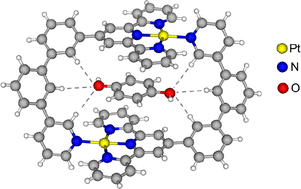Selective binding of benzenediol derivatives by simultaneous non-covalent interactions in bis-Pt(II) aza-aromatic host–guest system†
Abstract
We have designed and synthesized a new ligand,

* Corresponding authors
a
Graduate School of Pure and Applied Sciences, University of Tsukuba, Tsukuba, Ibaraki, Japan
E-mail:
nabesima@chem.tsukuba.ac.jp
Fax: (+81) 29-853-4507
We have designed and synthesized a new ligand,

 Please wait while we load your content...
Something went wrong. Try again?
Please wait while we load your content...
Something went wrong. Try again?
R. Trokowski, S. Akine and T. Nabeshima, Dalton Trans., 2009, 10359 DOI: 10.1039/B911602H
To request permission to reproduce material from this article, please go to the Copyright Clearance Center request page.
If you are an author contributing to an RSC publication, you do not need to request permission provided correct acknowledgement is given.
If you are the author of this article, you do not need to request permission to reproduce figures and diagrams provided correct acknowledgement is given. If you want to reproduce the whole article in a third-party publication (excluding your thesis/dissertation for which permission is not required) please go to the Copyright Clearance Center request page.
Read more about how to correctly acknowledge RSC content.
 Fetching data from CrossRef.
Fetching data from CrossRef.
This may take some time to load.
Loading related content
